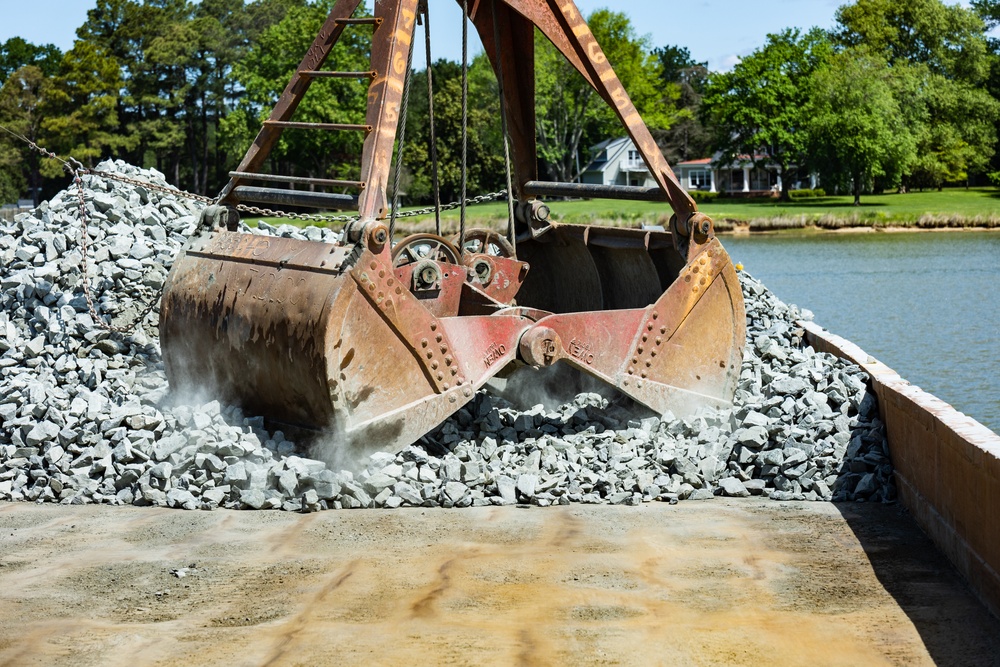DVIDS – News – Casting Lines and Bridging Communities: U.S. Coast Guard Forces Micronesia celebrates World Tuna Day with sustainable fishing and community engagement in the Northern Marianas
This World Tuna Day, we reflect on the sustainable practices that help preserve our oceans and the species they sustain. Our crew aboard the USCGC Oliver Henry (WPC 1140) recently embraced the rich marine life and cultural heritage of the Commonwealth of the Northern Mariana Islands (CNMI), notably on Pagan Island.
During a liberty break from patrolling the Northern Marianas, they engaged in recreational fishing. They caught tuna using sustainable rod-and-reel methods. This activity wasn’t merely about fishing; it was about forging a deep connection with the ocean and reflecting on the importance of respecting our marine resources.
“As someone who grew up in the Pacific, the ocean has always been a part of who I am. Being able to serve and protect these waters and islands is important to me. Each patrol we go on, whether it’s a rescue or just being present in the community, is a chance to give back to the ocean and lands that give us so much. Our work ensures the safety and health of our Pacific family,” said Petty Officer 1st Class Ikaika Ruiz.
Why Focus on Tuna?
Tuna is crucial for food security, nutrition, and the global economy, yet overfishing and illegal fishing threaten their populations worldwide. On World Tuna Day, we advocate for sustainable fishing and collaborative measures among agencies and governments to ensure future generations can enjoy these incredible fish.
Imagine a line of fully loaded cargo ships stretching across the horizon. According to the International Seafood Sustainability Association, in 2021, the total catch of major commercial tuna stocks in the Pacific Ocean was 4.8 million tons, roughly equivalent to the combined weight of about 91 fully laden Titanics. This immense figure underscores the massive scale of the tuna fishing industry and its global significance. For comparison, imagine an airfield of fully loaded jumbo jets. According to NOAA, in 2022, U.S. commercial landings of Pacific bluefin was 800,000 lbs. and albacore tuna was 16 million lbs. Combined, they equate to the weight of about 19 Boeing 747s, each fully loaded with passengers and luggage. This vast amount highlights the scale of the U.S. fishing industry and the significant role these fish play in our economy and food supply.
Many are unaware that the tuna on their plates, celebrated as a healthy protein source, embarks on a complex journey across the globe—often caught in the Pacific by a multinational crew aboard a vessel flagged from one country, fishing on the high seas or within another country’s exclusive economic zone, before being transferred to yet another ship or port in a different country for processing and packaging. This intricate chain of custody underscores the global nature of our seafood supply and highlights the formidable challenges we face in combating illegal fishing.
Engaging with Local Communities
For nearly eight decades, the U.S. Coast Guard’s presence in the Northern Mariana Islands has been one of partnership and stewardship of the marine environment. Our crews are committed to being a positive force, respecting local traditions with a reasonable footprint. Our presence supports anti-illegal fishing efforts, protecting the stocks locals depend on for their livelihoods. Everything on the ocean is intertwined, as are our missions.
The U.S. Coast Guard is deeply committed to supporting our Marianas and regional partners and navigating the unique challenges of the local fishing community. As commercial fishing declined due to economic, environmental, and regulatory factors, our role now emphasizes sustainability and community support. We actively enforce safety for recreational activities, fishing regulations, and conservation efforts, protecting marine biodiversity while preserving the cultural and subsistence practices that enrich the local community. This effort includes patrolling marine protected areas, such as in the Islands Unit of the Marianas Trench Monument, to safeguard these vital ecosystems.
“During our recent patrols in the Marianas, we transported a U.S. Fish and Wildlife conservation officer, further solidifying our commitment to cooperation and protecting the unique ecosystems of this region. This collaboration enhances our ability to enforce conservation regulations effectively, ensuring the sustainability of our marine environments vital to the community’s livelihood and deep-seated connection to the sea. The operations in the CNMI are a reminder of why we do what we do—it’s about making a real difference in the lives of those in remote locations who rely on our readiness and care,” said Lt. Ray Cerrato, commanding officer of Oliver Henry.
In addition to our maritime missions, the USCGC Oliver Henry crew recently responded to a call for help from those on Pagan. The crew provided crucial assistance to two individuals who had been without reliable communication for three months. After discovering their radio was inoperable and concerned about an impending water shortage due to an expected increase in population, our team supplied potable water and attempted to repair the communication equipment. To ensure continued support, one man was transported to Saipan to coordinate repairs and logistics directly with the Northern Marianas mayor.
Over the last 18 months, our NMI efforts extended beyond patrolling. Following Typhoon Mawar in June 2023, the U.S. Coast Guard played a vital role in recovery efforts, ensuring the safe reopening of ports and clearing navigation hazards in Guam, Saipan, and Tinian. We’ve also actively participated in community and capacity-building initiatives, including expert exchanges with local agencies to enhance maritime safety and security capabilities.
We played an essential role in ensuring the health and safety of individuals across the Pacific, particularly on remote islands like Alamagan. In May 2023, our USCGC Oliver Henry (WPC 1140) crew demonstrated this commitment by conducting a critical medical evacuation. With support from the CNMI Department of Fire and EMS, we successfully evacuated a 30-year-old man with severe head and neck injuries from Alamagan Island to Saipan for urgent medical care. This operation showcased our readiness and capability to provide lifesaving assistance in isolated locations. It emphasized our ongoing dedication to the well-being of the communities within the Northern Mariana Islands.
“As a culinary specialist, I take pride in nourishing our crew, but as an EMT, my role expands to ensure their well-being and that of others in urgent times. It was intense the night we responded to the medical emergency on Alamagan, pulling up to that challenging volcanic beach. Hiking in the dark to stabilize a man in need and ensuring his safe transport to higher care was a good reminder of our critical impact. It’s moments like these that reinforce the importance of our presence here—being ready to help others, no matter the obstacles,” said Petty Officer 1st Class Joshua Pablo, a son of Guam.
The Service’s activities also extend to facilitating transportation and support for supplies and local officials. Our USCGC Frederick Hatch (WPC 1143) and USCGC Myrtle Hazard (WPC 1139) crews both transported the mayor of the Northern Islands of CNMI to visit constituents, highlighting support for community engagement and governance in these remote areas.
“From Guam to the Northern Marianas and further into the Pacific, our culture runs deep in respect for land and water. This respect drives my passion for the Coast Guard’s mission—ensuring that we protect these precious resources and strengthen the fabric of the communities we serve,” said Petty Officer 1st Class Ben Laguana, a son of Guam.
These actions underscore the depth of our commitment to the Marianas—not just in safeguarding maritime territories but also in supporting the resilience and well-being of the island communities. As we mark World Tuna Day, we celebrate these partnerships and our shared dedication to sustainable marine resource management.
A Day of Awareness and Advocacy
As we share this story of camaraderie and conservation, we aim to inspire others to consider where their seafood comes from and to choose sustainably sourced tuna. We celebrate World Tuna Day by committing to practices that help our marine life thrive, ensuring healthy oceans for decades to come.
“Our missions extend far beyond mere operations; they are deeply woven into the fabric of the communities we serve and resonate with our global responsibilities as a nation. From our members who hold familial and cultural ties to the region to our legacy of service that spans generations, each action we undertake is infused with a sense of duty to the people of the Pacific. Our commitment to peace, safety, security, and environmental stewardship of the Marianas underscores our broader pledge to uphold international maritime standards and protect shared global marine resources,” said Capt. Nick Simmons, commander of U.S. Coast Guard Forces Micronesia Sector Guam.
-USCG-
U.S. Coast Guard Forces Micronesia/Sector Guam
The U.S. Coast Guard Forces Micronesia/Sector Guam team focuses on maritime safety, security, and stewardship in Oceania. With a primary presence in Guam and Saipan and over 300 members across Guam and the Commonwealth of the Northern Mariana Islands, the team maintains a strong U.S. presence in the Micronesia sub-region and adjacent areas, closely tied to local communities.
| Date Taken: | 05.02.2024 |
| Date Posted: | 05.02.2024 22:00 |
| Story ID: | 470195 |
| Location: | SANTA RITA , GU |
| Web Views: | 39 |
| Downloads: | 0 |


 Private Internet Access gives you unparalleled access to thousands
of next-gen servers in over 83 countries and each US state. Your
VPN experience will always be fast, smooth, and reliable.
Private Internet Access gives you unparalleled access to thousands
of next-gen servers in over 83 countries and each US state. Your
VPN experience will always be fast, smooth, and reliable.

